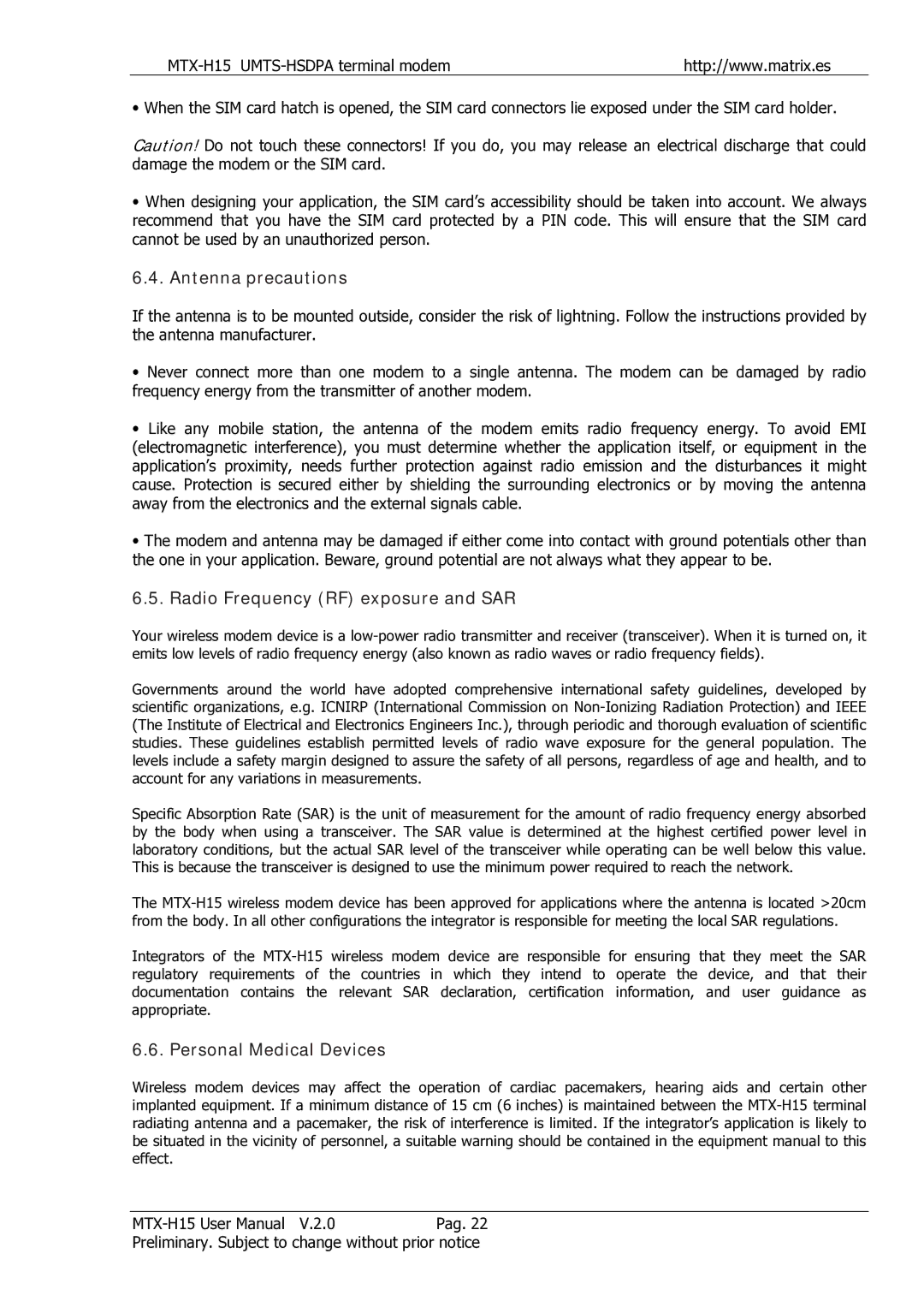http://www.matrix.es |
• When the SIM card hatch is opened, the SIM card connectors lie exposed under the SIM card holder.
Caution! Do not touch these connectors! If you do, you may release an electrical discharge that could damage the modem or the SIM card.
•When designing your application, the SIM card’s accessibility should be taken into account. We always recommend that you have the SIM card protected by a PIN code. This will ensure that the SIM card cannot be used by an unauthorized person.
6.4. Antenna precautions
If the antenna is to be mounted outside, consider the risk of lightning. Follow the instructions provided by the antenna manufacturer.
•Never connect more than one modem to a single antenna. The modem can be damaged by radio frequency energy from the transmitter of another modem.
•Like any mobile station, the antenna of the modem emits radio frequency energy. To avoid EMI (electromagnetic interference), you must determine whether the application itself, or equipment in the application’s proximity, needs further protection against radio emission and the disturbances it might cause. Protection is secured either by shielding the surrounding electronics or by moving the antenna away from the electronics and the external signals cable.
•The modem and antenna may be damaged if either come into contact with ground potentials other than the one in your application. Beware, ground potential are not always what they appear to be.
6.5. Radio Frequency (RF) exposure and SAR
Your wireless modem device is a
Governments around the world have adopted comprehensive international safety guidelines, developed by scientific organizations, e.g. ICNIRP (International Commission on
Specific Absorption Rate (SAR) is the unit of measurement for the amount of radio frequency energy absorbed by the body when using a transceiver. The SAR value is determined at the highest certified power level in laboratory conditions, but the actual SAR level of the transceiver while operating can be well below this value. This is because the transceiver is designed to use the minimum power required to reach the network.
The
Integrators of the
6.6. Personal Medical Devices
Wireless modem devices may affect the operation of cardiac pacemakers, hearing aids and certain other implanted equipment. If a minimum distance of 15 cm (6 inches) is maintained between the
